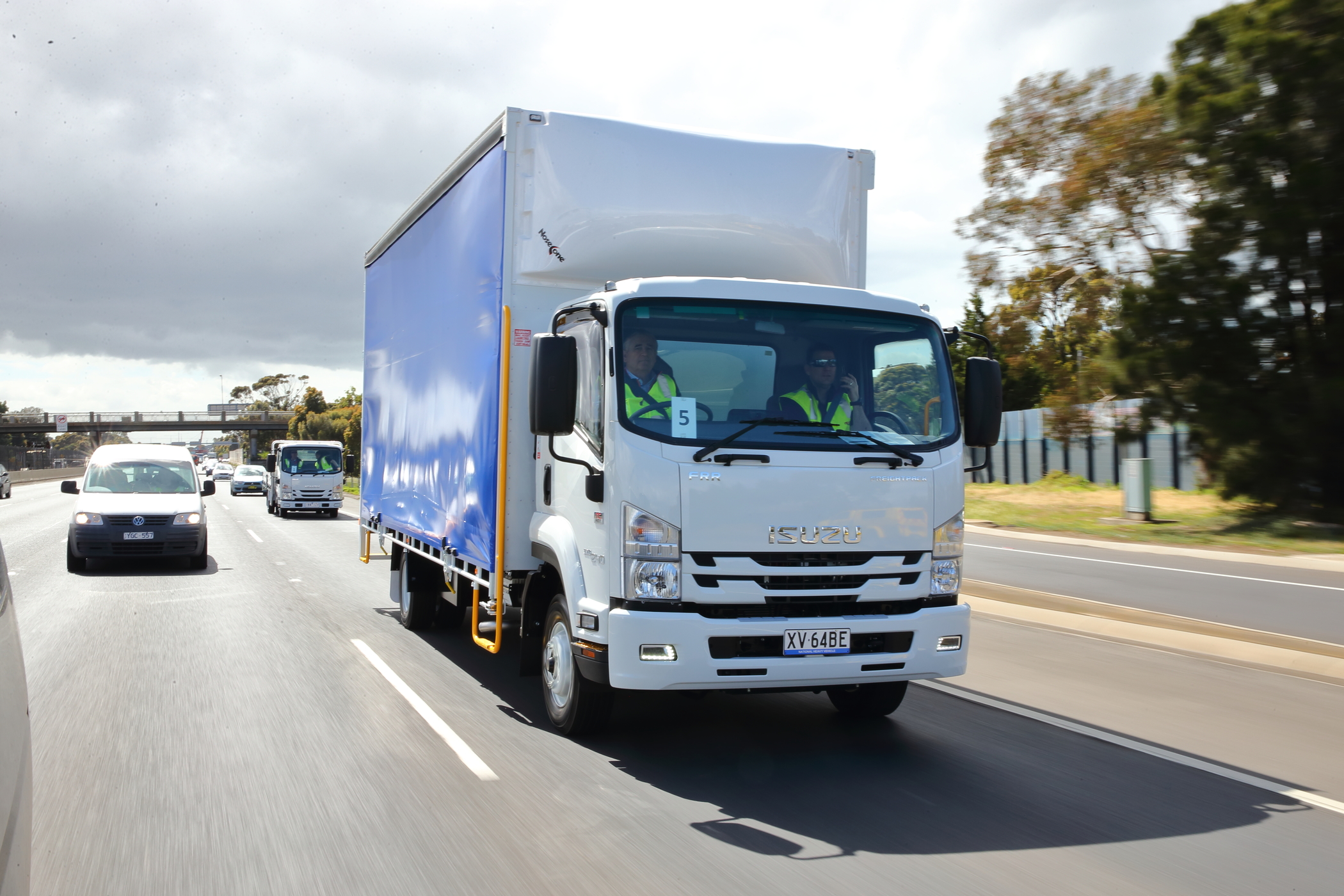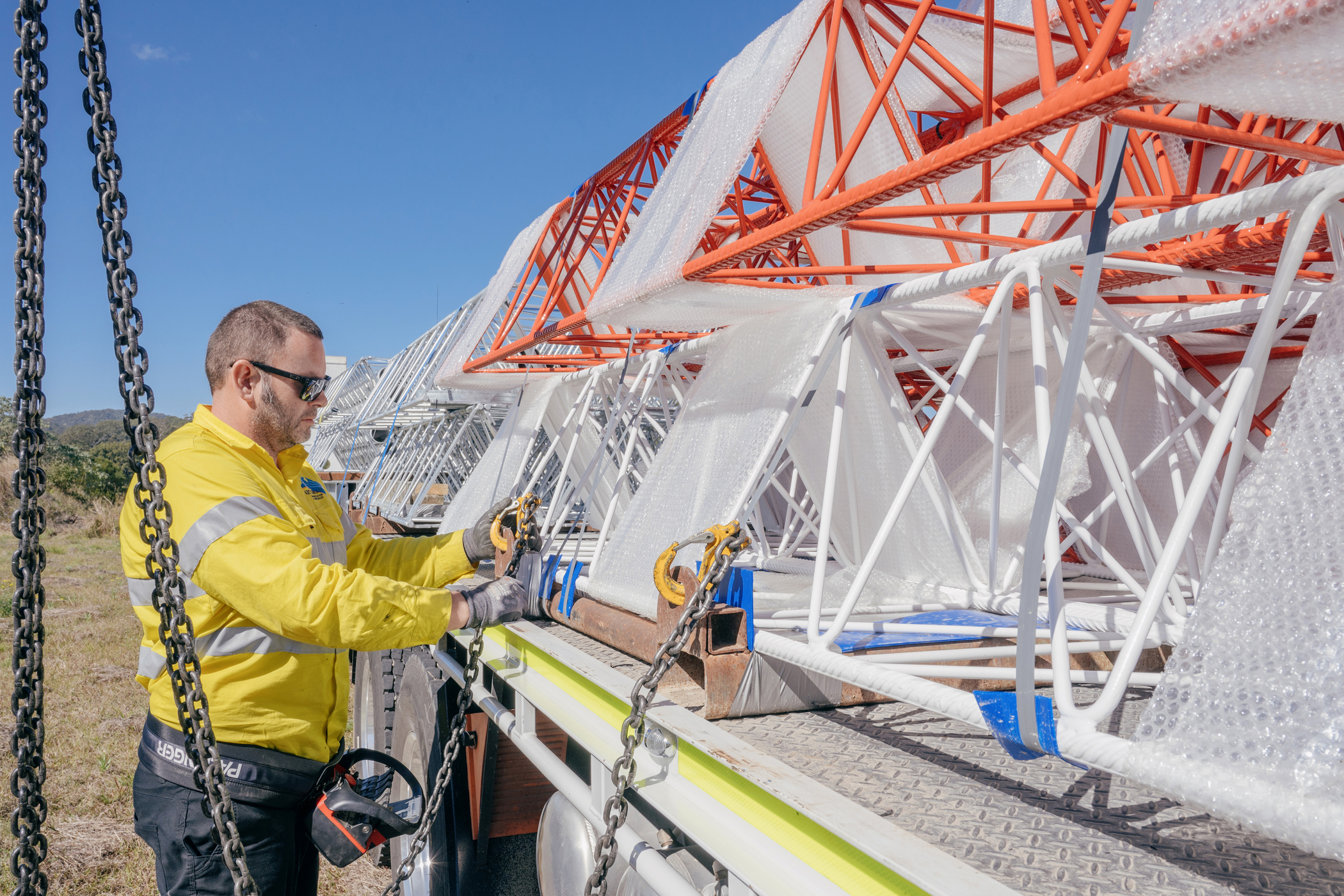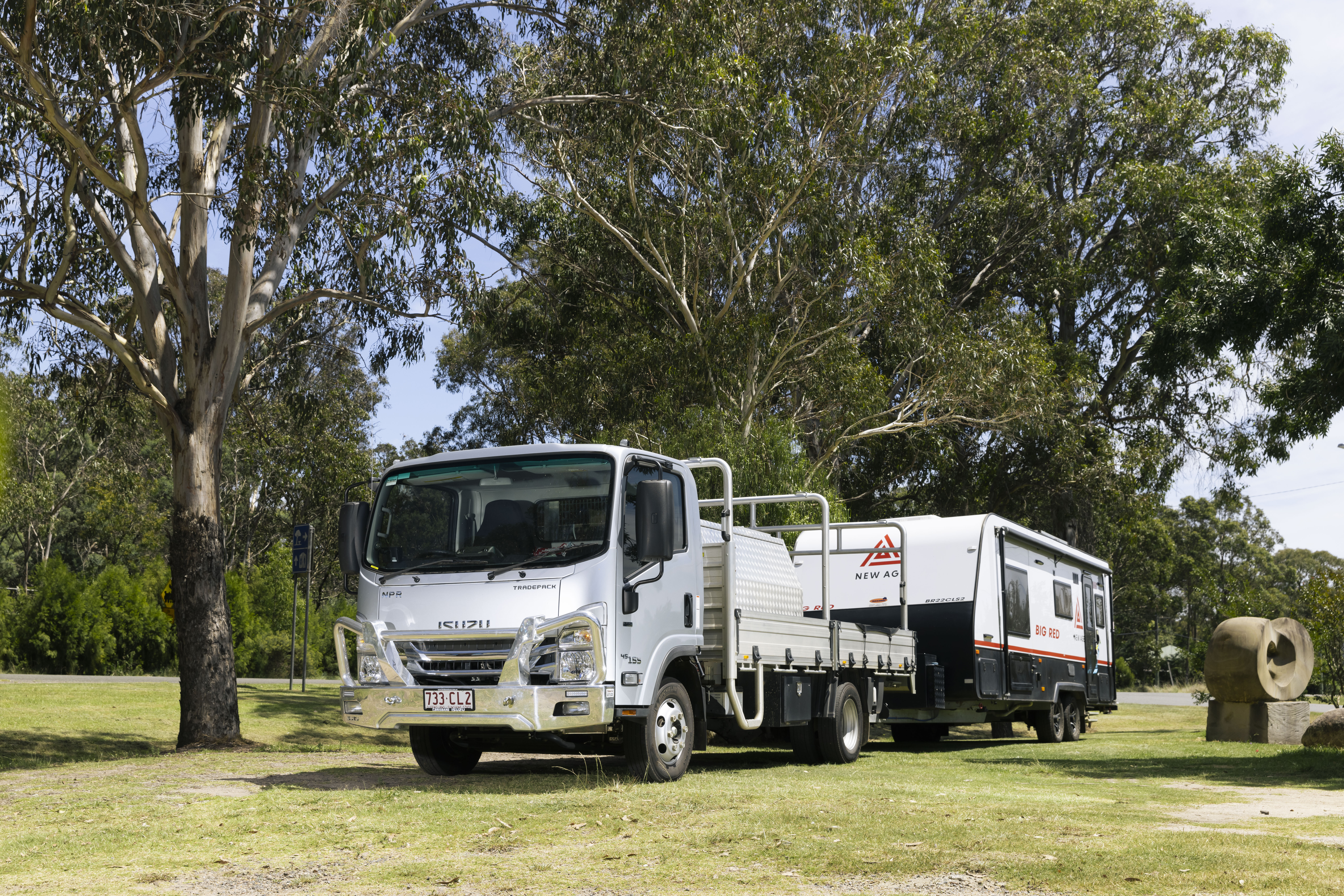The mass-ive difference between a light truck & ute
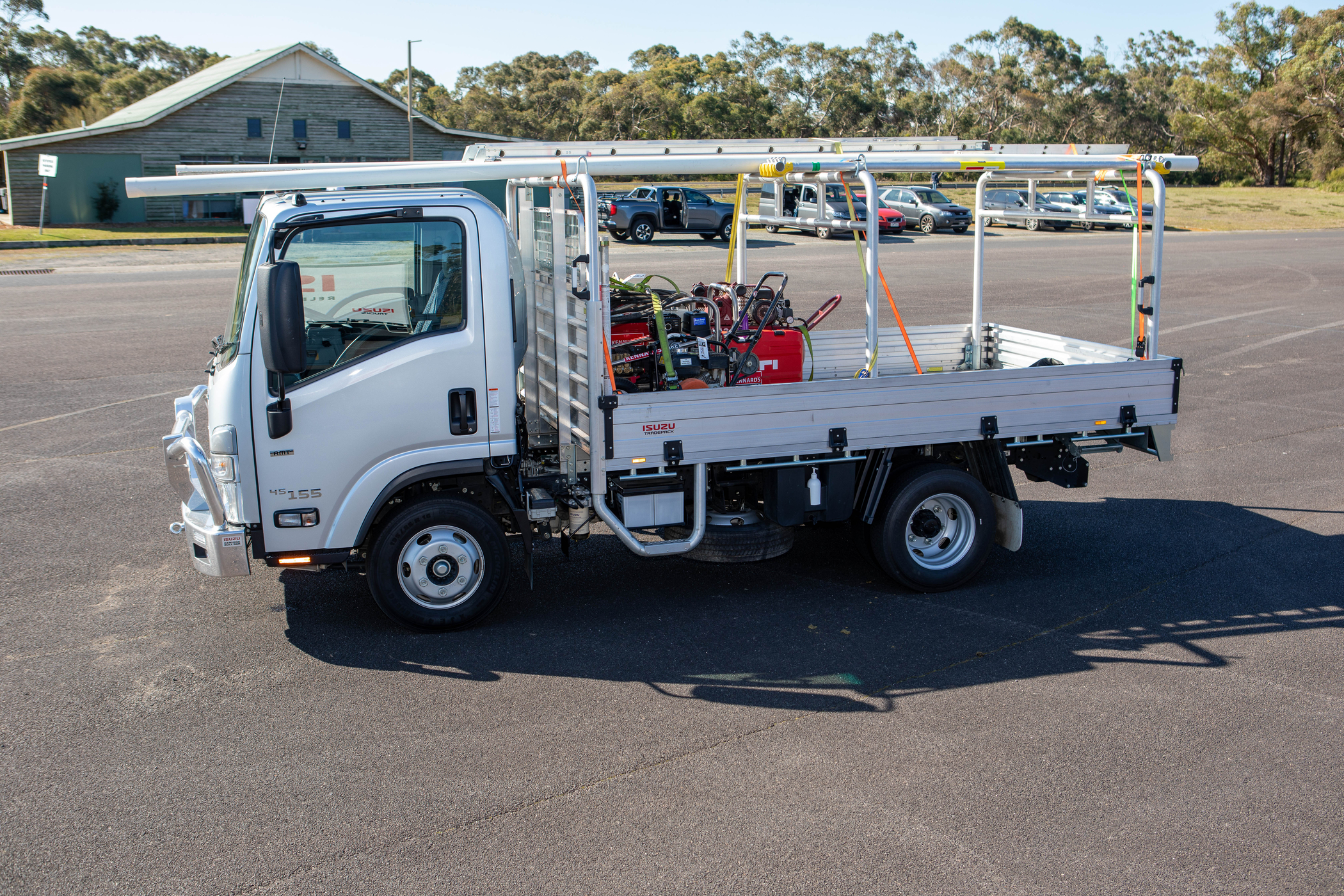
How much can it carry? It’s a question that every prospective buyer of a work vehicle will rightly ask.
“A ton of stuff” is the answer you want to hear, but whether that’s a literal tonne or a more figurative tonne is yet to be determined.
If you’re comparing vehicles for business use, what a vehicle can carry (weight-wise) and how much space there is available on the tray or body to fit it are important factors that will make or break your decision to buy.
If you’re in a trade, you’ll likely need a bag of swag with you each day and this boils things down to a fairly simple equation: the more you can fit and carry, the more efficiently you can operate.
That’s fewer trips back to base, more tools and materials, and room for a few extras like a generator and lockable toolboxes, your best mate and your dog, too.
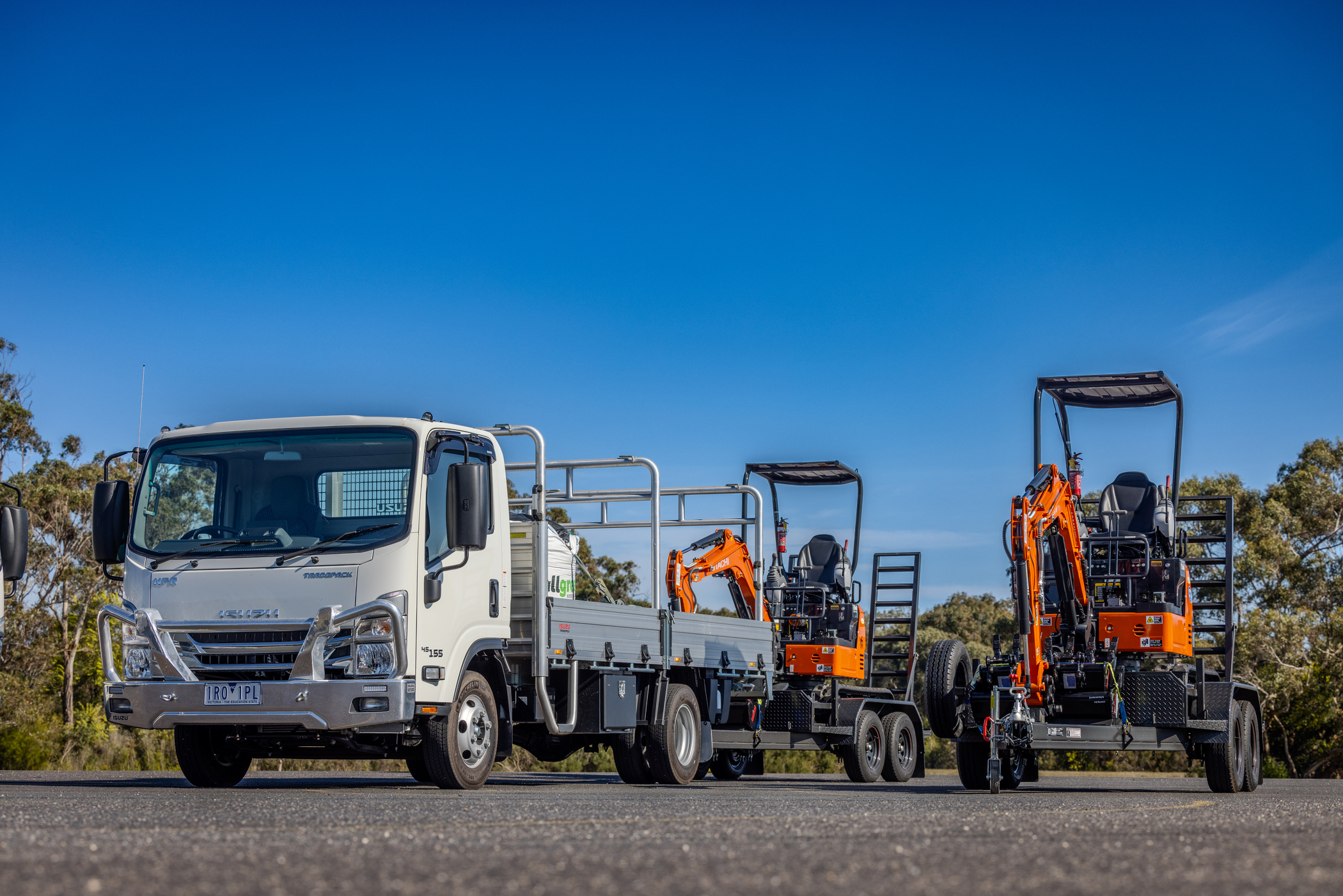
Direct comparison method
Ute versus truck—the age-old debate that will never get old! Comfort over efficiency, aesthetics over utility, play over work… there’s a heap of different things to consider.
In terms of how much each can fit, we take a direct comparison approach, testing how much can fit in the back of one of the country’s most popular dual-cab utes, versus one of the country’s most popular pre-built light trucks.
Important note: both vehicles tested here can be driven using a standard Australian car licence, coming under the 4,500 kg Gross Vehicle Mass mark. The weight limit includes the vehicle's occupants, which can be up to five people in a dual-cab truck or ute.
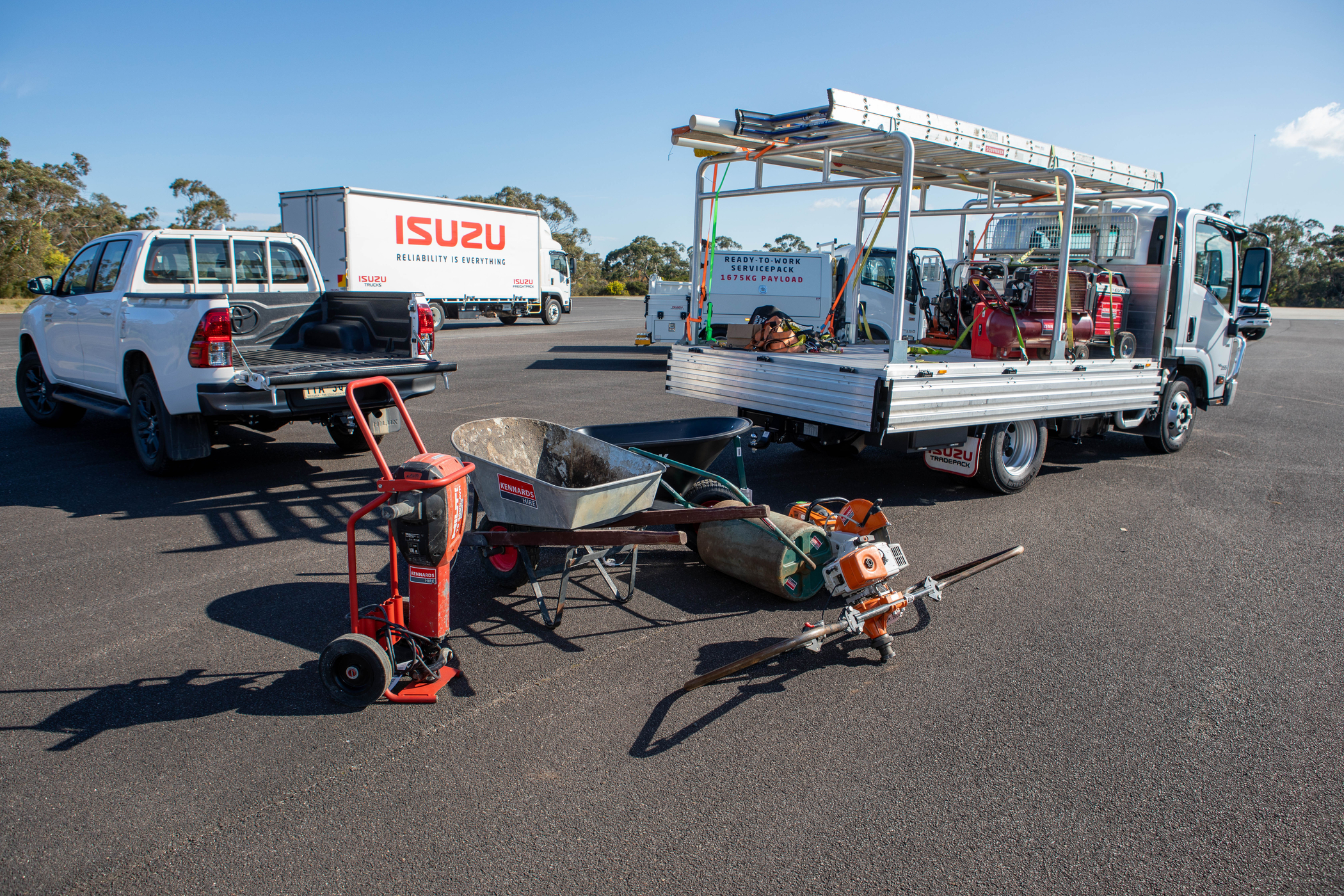
With an on-road payload of 1,575 kg, the truck accommodated a wide range of common tools and equipment, totalling 17 separate items in the tray.
The dual-cab ute has a 470 kg payload. When attempting to load the same equipment in the tray, it could fit and legally carry 6 separate items, with some items needing to be left off due to the ute’s tray length.
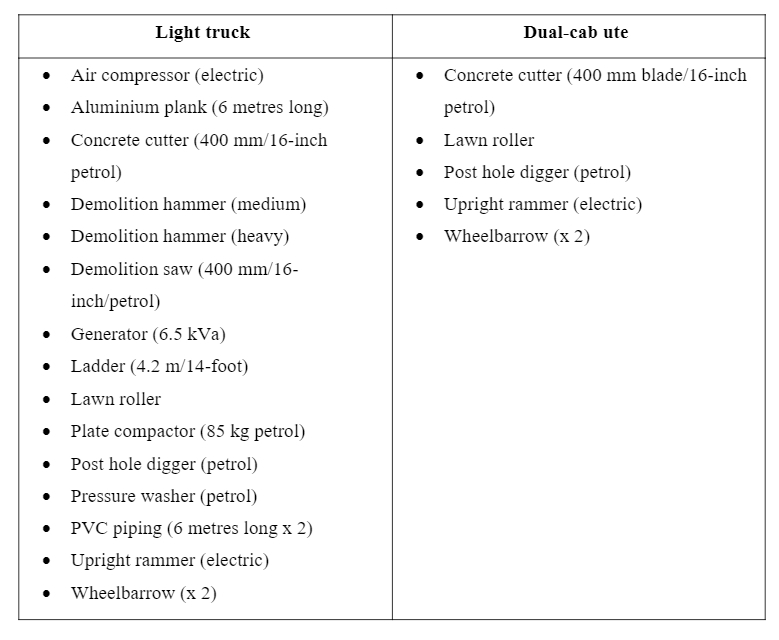
Breaking it down
Here are a few key points that can be taken from directly comparing this light truck and ute, which would impact daily trade operations:
- Moving the same equipment would take three trips with the ute. The six-metre plank and PVC piping were both left behind as they were too long for the tray. The ute could possibly carry this longer equipment if additional ladder racks were fitted to the tray.
- The truck has an 8.7-metre turning circle due partly to the cab-over-engine design. This is compared to a 12-metre turning circle in the ute, where the engine sits out front.
- A trailer could increase the carrying capabilities of both the ute and the truck. The light truck has a maximum towing capacity of 4,500 kg, compared to 3,500 kg for popular utes.
- In the configuration tested, the dual-cab ute can carry up to five occupants, compared to the single-cab truck, which can carry a maximum of three (two passengers and a driver). A dual-cab model truck would still comfortably carry this equipment, although the overall payload would be reduced.
Ute takeaway
As the name implies, a utility vehicle is designed to cover many bases. For many years, its design has become more carlike and, therefore, offers greater in-cabin luxury items, which has led to its popularity among passenger car buyers.
The ability to go off-road in all-wheel drive is also part of the purchasing decision process, but arguably, this is down to using the vehicle for mostly non-work-related needs.
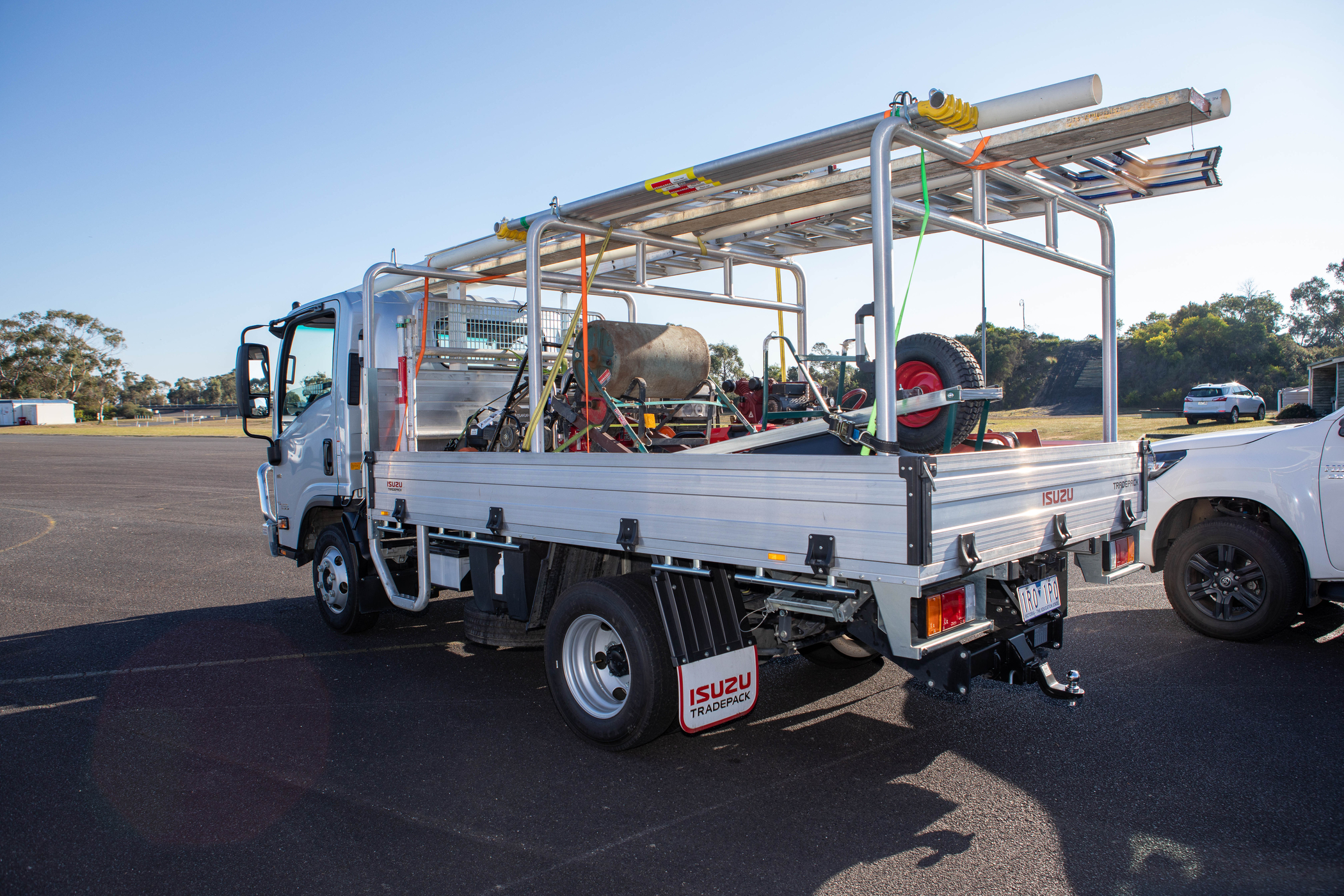
Truck takeaways
Pre-bodied light trucks, such as the one used in this comparison, are fit-for-purpose, meaning they are engineered specifically to handle trade operations and large loads.
The solid aluminium tray body and headboard can withstand knocks without damaging paint and other panels.
The cab-over design provides a tighter turning circle, which is ideal for worksites. The driver's position over the front axle allows for greater vision on open roads and worksites.
Depending on the trade, custom or pre-bodied model options are readily available from a range of truck OEMs.
In terms of comfort and in-cabin luxury items, a truck is likely to feel more economical than a high-end ute, but you might find yourself surprised at how things have evolved over the past few years, particularly in terms of safety features.
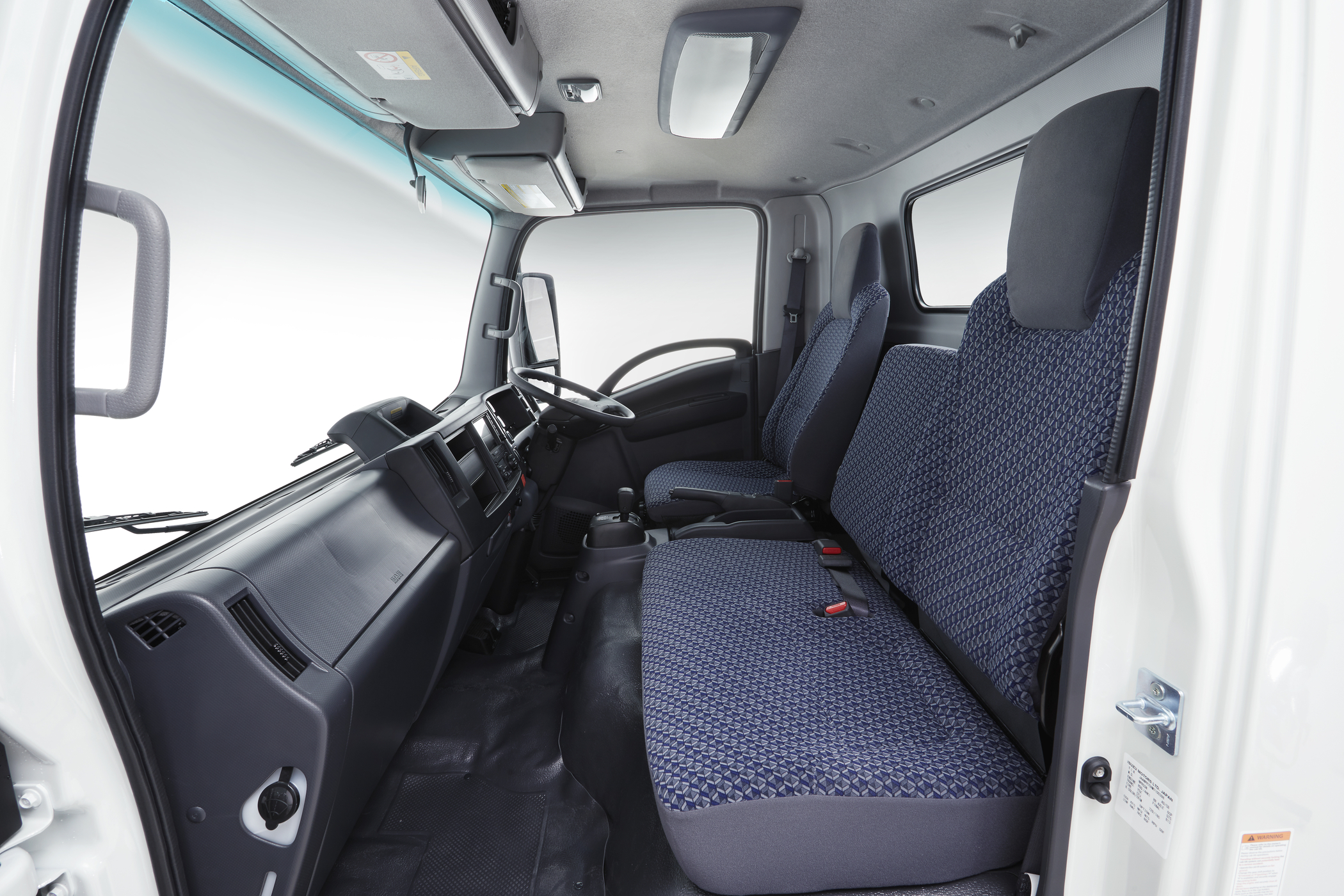
Load it up
The comparison above shows that this pre-bodied light truck can carry more weight, equipment, and material than the popular commercial dual-cab ute it was pitted against.
Factors such as payload, capacity, and the ability to be driven on a standard car licence (Gross Vehicle Mass of 4,500 kg or under) make light trucks an increasingly popular option as everyday work vehicles.
Across all brands available on the Australian market from 2019 to 2023, new vehicle sales in the light truck space outstripped the 4x4 light commercial ute segment by a solid 15.9 per cent, with a total growth of 39.4 per cent over this period.
Growth is 23.5 per cent across the same period for all brands in the 4x4 light commercial ute segment.
All things to chew over before your next vehicle purchase!
Drive's Ben Zachariah explored a light truck and ute comparison—watch the video review here.
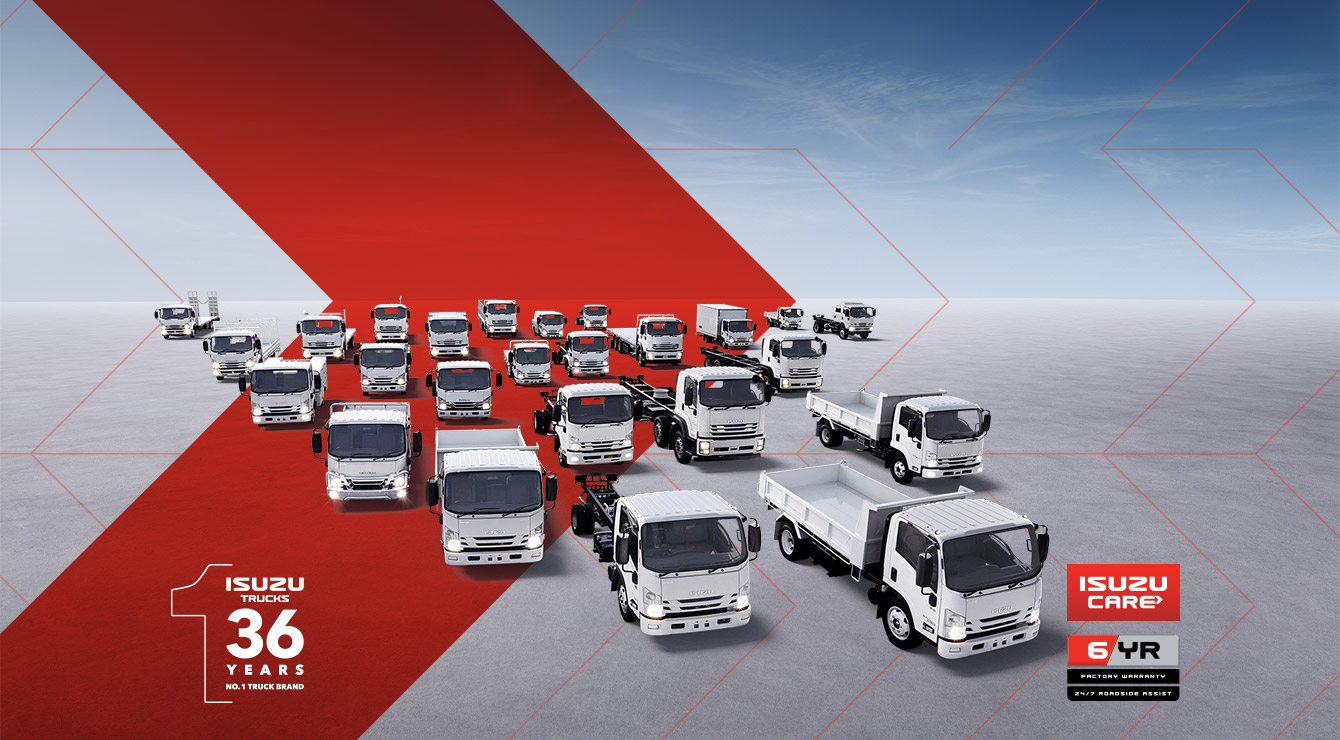
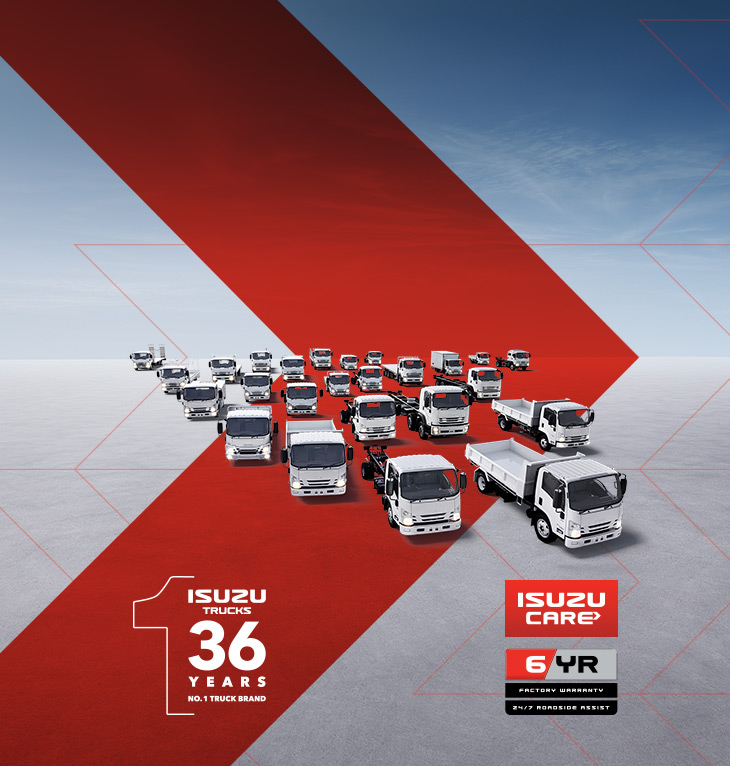
Lead the charge with Australia’s favourite truck.
2025 heralds Isuzu Trucks’ 36th year as market leader.* Number one in more than just sales, though, Isuzu Trucks has an unparalleled dealer support network, customer care program, truck range, and legendary reliability. To get behind the wheel of a winner, get into your nearest Isuzu Trucks Dealer now or visit isuzu.com.au
Learn More
